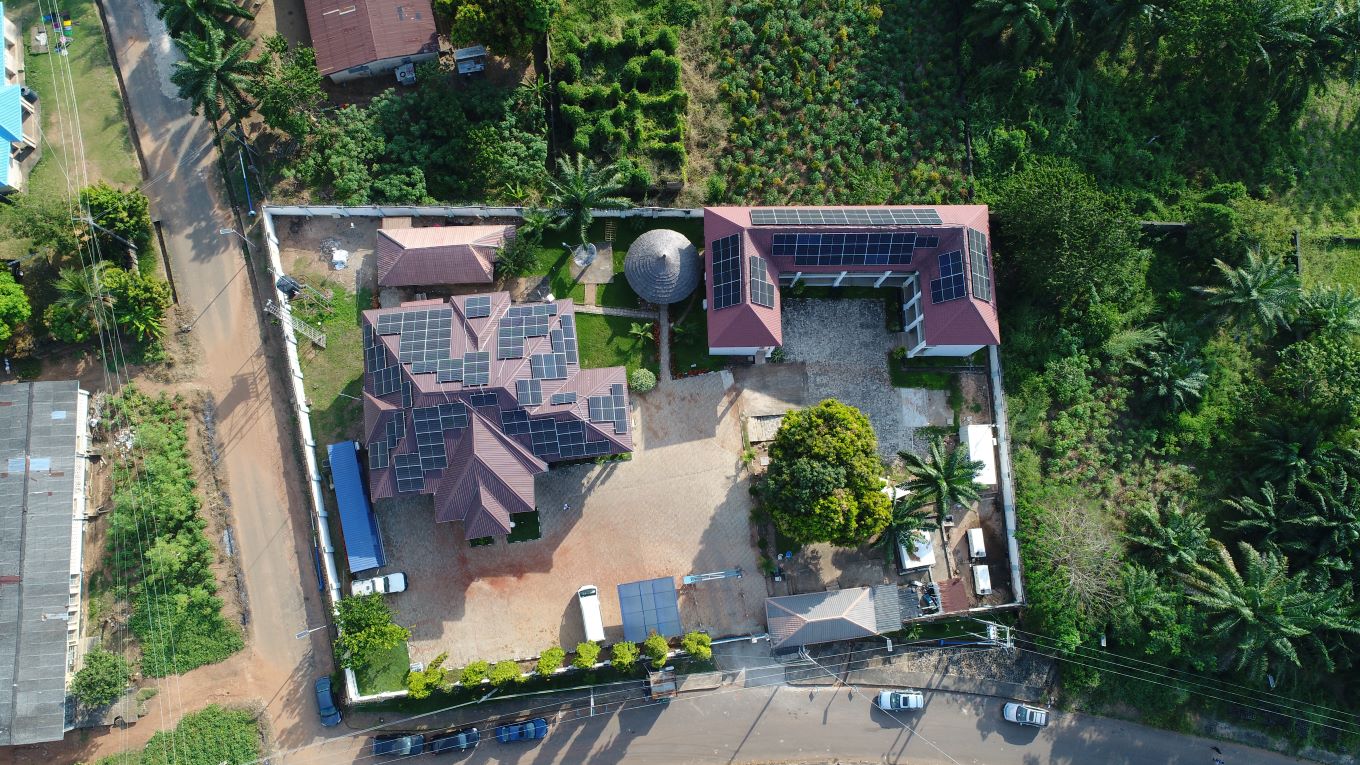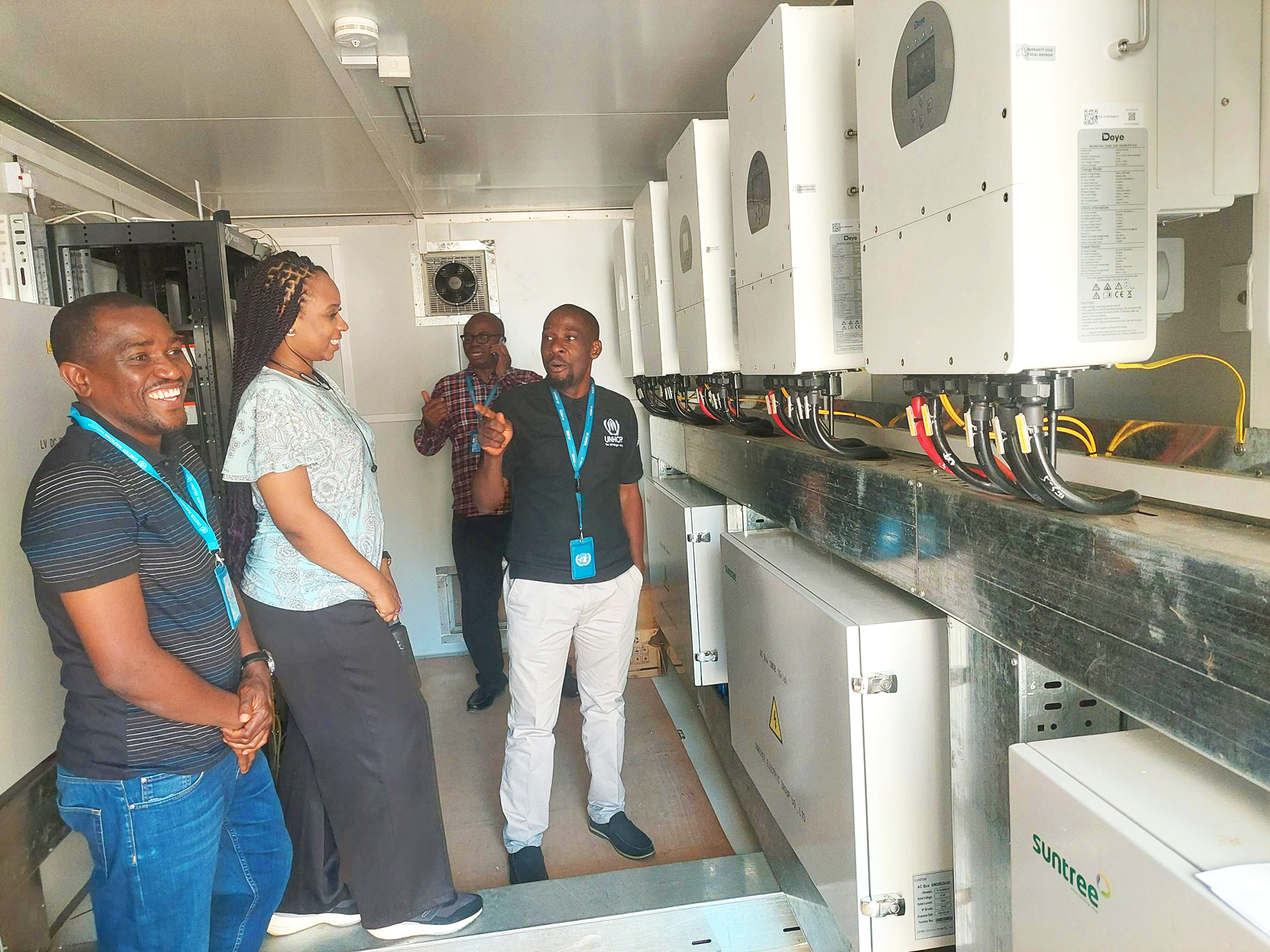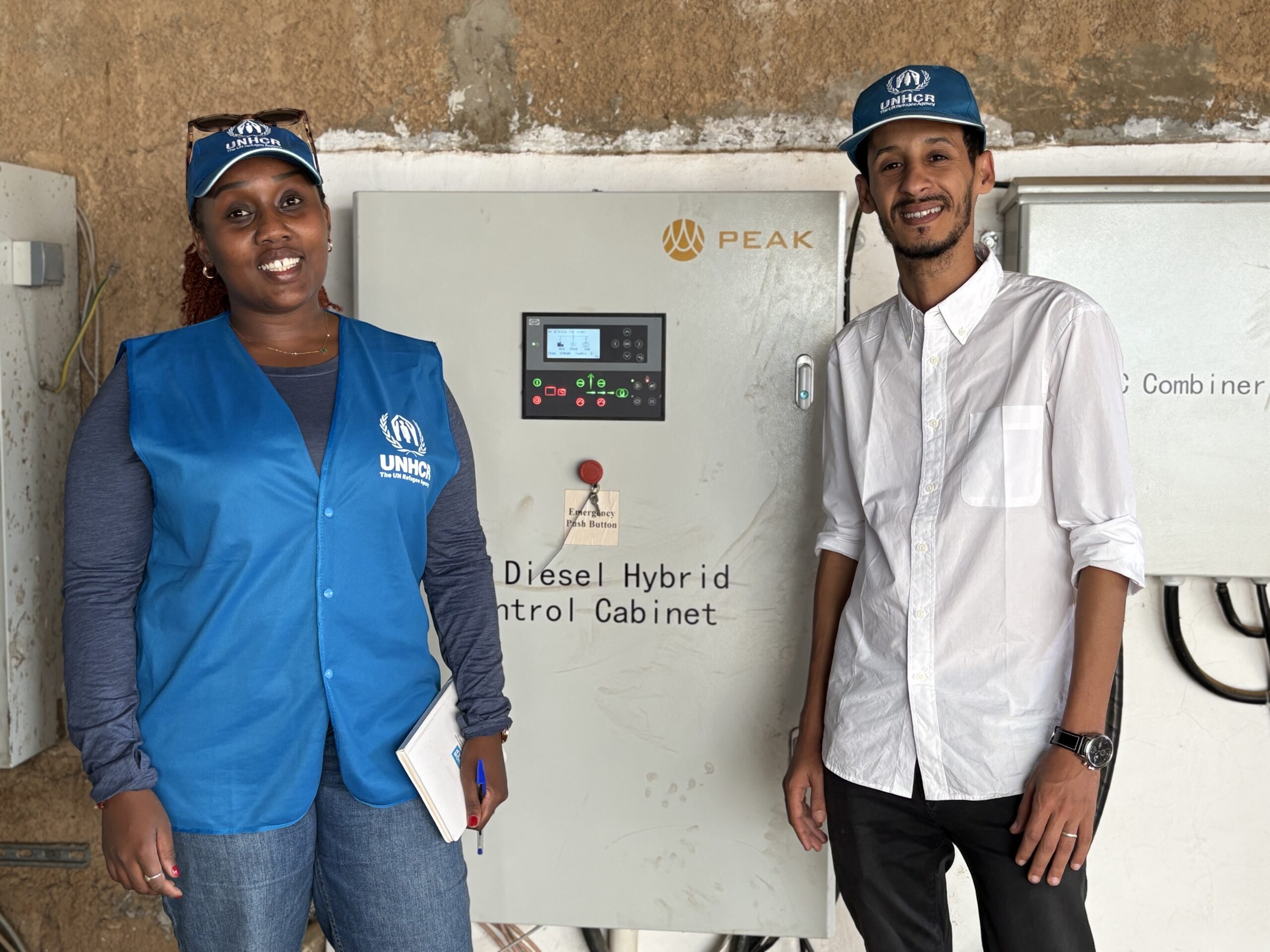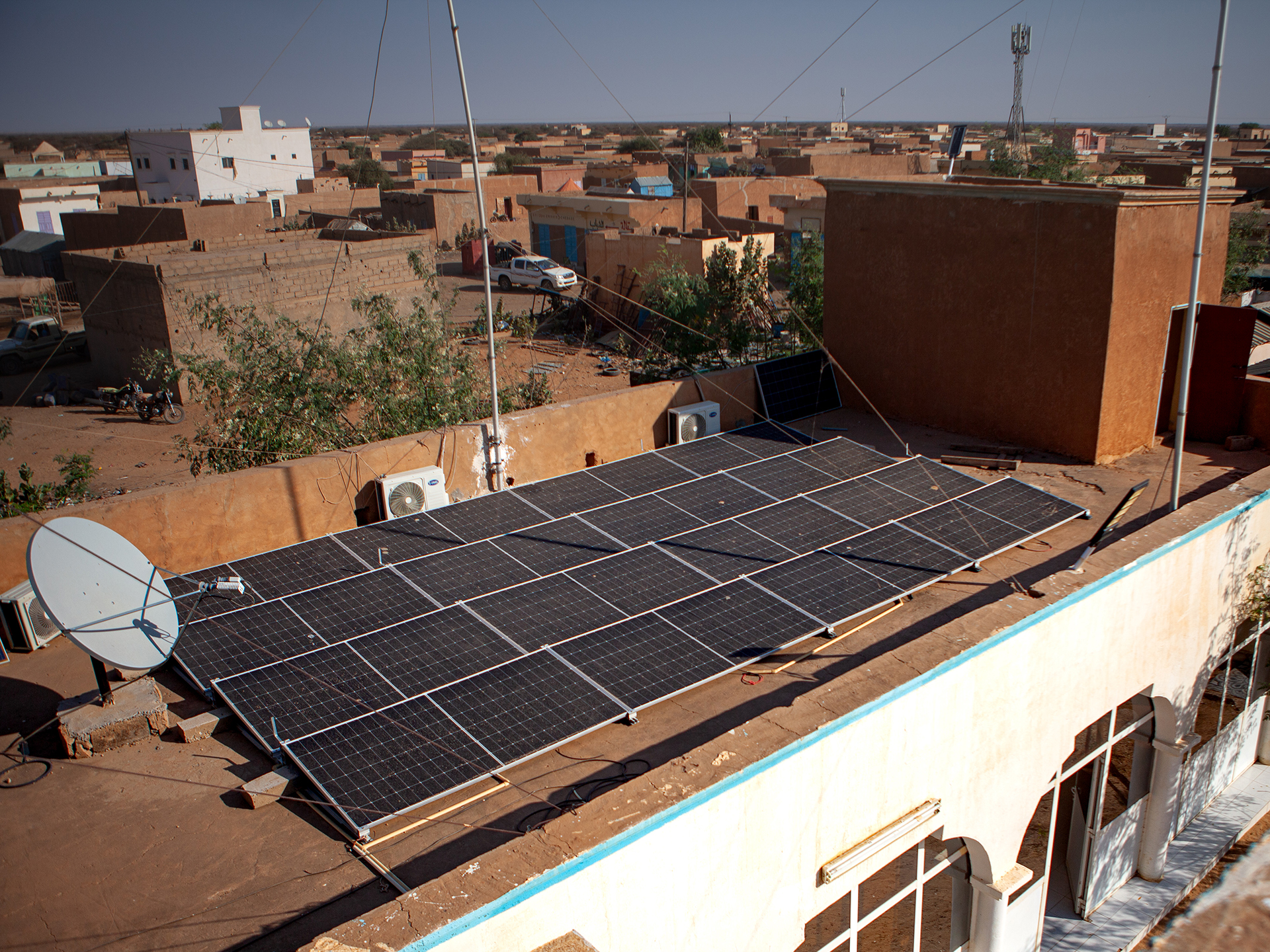By Laura Argibay, UNHCR Associate Communications Officer and Anett Varga, UNHCR Associate Programme Officer.

Aerial view of rooftop solar panels at UNHCR’s Office in Ogoja, Nigeria. © UNHCR/Owoche Igwue
UNHCR, the UN Refugee Agency, has about 550 offices around the world, and powering them contributes to a substantial portion of the organization’s overall environmental footprint. According to the latest data submitted to the UN Environmental Programme’s Greening the Blue Report, office-related emissions made up 56 per cent of UNHCR’s total CO2 emissions, generated by buildings, fleet and travel. A part of these emissions come from diesel-fuelled generators, which are used to power buildings in remote areas without a stable grid connection.
To reduce this environmental impact and to take targeted action, UNHCR has developed the Green Financing Facility (GFF) with the support of the Swedish International Development Cooperation Agency (Sida), the German Federal Ministry of Economic Cooperation and Development (BMZ) and the IKEA Foundation. UNHCR’s GFF is an innovative financing mechanism, providing long-term and high-quality solar power solutions for its offices. It uses financial guarantees to enable long-term contracts with the private sector for solarization, as well as a revolving fund that uses the same capital to solarize multiple sites over time. The GFF is part of UNHCR’s efforts to reduce its own environmental footprint driven by its Focus Area Strategic Plan for Climate Action.
Using a data-driven approach based on a remote energy measuring technology, offices that account for 80 per cent of UNHCR’s infrastructure emissions will transition to renewable energy using the GFF, especially in areas affected by climate change. There are currently seven offices that have been equipped with solar systems using the GFF, six of those installed in Nouakchott and Bassikounou (sub-office and guest house) in Mauritania and Abuja, Lagos, and Ogoja (sub-office and guest house) in Nigeria. The systems have been operational since September 2024. With a total installed solar capacity of 360 kilowatt peak (kWp)*, the use of diesel-fuelled generators have been decreased, reducing CO2 emissions up to 45 per cent in Mauritania and up to 85 per cent in Nigeria yearly.

Colleagues in the solar facility room at UNHCR’s office in Abuja, Nigeria. © UNHCR/Sekav Abe

Colleagues and the system control panel in Bassikounou, Mauritania. © UNHCR/Didier Akpa
For these solarization projects, the GFF fund was used to purchase and install the solar systems, with the agreement of the operations to lease the assets once they start to provide energy. The lease payments will be fixed for the next 10 years, enabling operations to safely budget for energy costs, instead of facing uncertainty due to the volatility of diesel fuel prices. With the solar systems in place, the expected annual diesel savings are 24,000 litres in Mauritania and 203,500 litres in Nigeria. The financial savings generated on fuel are freed up for UNHCR’s programmes, allowing the provision of additional support where it is needed the most.
When solarizing the buildings in Mauritania and Nigeria, choosing the right technology depended on various site conditions. To ensure optimal results, the solar systems were tailored to fit the local contexts, aiming for reliability, CO2 emissions reductions, and financial efficiency. This optimization was achieved with a grid-tied solar system in Mauritania and hybrid energy systems in Nigeria, which include a combination of solar panels, batteries and an electrical grid where it was available, and as last resort, generators. Generators remain part of the systems to ensure continuous power supply during periods of low solar generation or grid outages.
Before the introduction of solar energy into the office’s power supply in Mauritania, high electricity costs were a major challenge. With the new solar systems in Nouakchott and in Bassikounou, the operation can reduce its energy costs. In Nigeria, diesel-powered generators were essential to cover blackouts, but their use resulted in increasing operational costs due to their frequent need for fuel and maintenance. They were also a significant source of air pollution and noise. The integration of solar battery systems into UNHCR’s energy infrastructure for Abuja, Lagos and Ogoja has substantially mitigated these issues, and the generators are now used primarily during periods of insufficient sunlight or grid outages. Stable and reliable power supply for UNHCR offices at these three locations are crucial, as they provide essential protection services for forcibly displaced and stateless people.

Solar panels on the roof of UNHCR’s office in Bassikounou, Mauritania. © UNHCR/Omar Doukali
The solarization projects in Mauritania and Nigeria were supported by donor funding from the Swedish International Development Cooperation Agency (Sida), the German Federal Ministry of Economic Cooperation and Development (BMZ) and the IKEA Foundation. In addition to Mauritania and Nigeria, solar panels also provide renewable energy at UNHCR’s South Africa Multi-Country Office and the Southern Africa Regional Bureau, operating within the same building, in Pretoria, South Africa. There are also currently ongoing installation works at three office locations in Kenya and Uganda as well as for two more offices in Lebanon. Additional procurements for more UNHCR sites are already underway, with the aim of solarizing 18 offices in 2025.
UNHCR’s solarization projects are expected to result in a 60 per cent to 90 per cent reduction in carbon emissions for most operations and financial savings of up to 25 per cent, depending on country context and site-specific conditions.
*kWp: Kilowatt-peak represents the nominal power of the solar system. It serves as the baseline measurement for a solar module, defining its maximum power output under specifically standardized conditions. In general, it can be said that 1 kWp of installed solar capacity could, around midday, provide enough power to operate a standard size air conditioning unit. Since local conditions such as temperature, sunlight, and the installation angle of the modules vary, the actual output at each site will differ.
